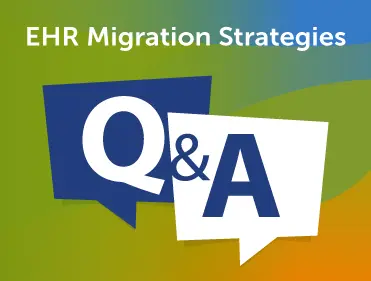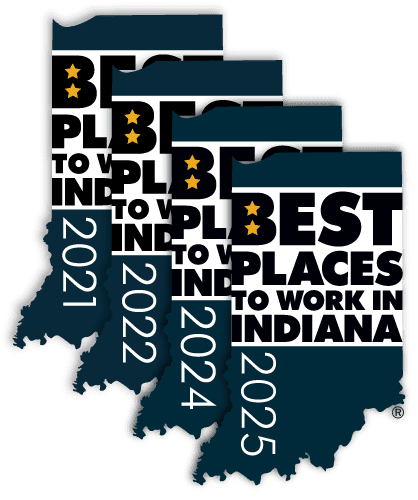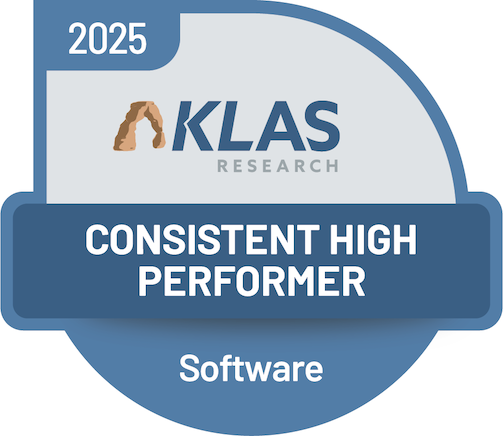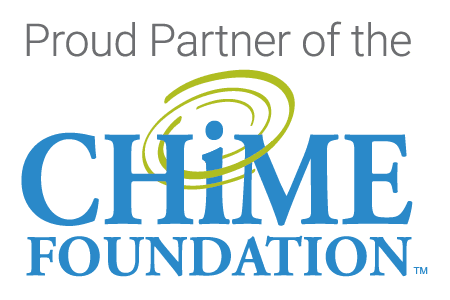
Scott Smiser, FACHE, FHIMSS, CHCIO, is a healthcare IT consultant who has held numerous roles at healthcare systems across the country, including as chief innovation and technology officer, chief information officer, and corporate IT director. With decades of experience supporting healthcare organizations through major technology transitions, Smiser has a nuanced understanding of what makes EHR migration projects successful.
Recently, he was part of the senior leadership team for one of the industry’s largest and most complex EHR migration projects — transitioning 11 hospitals, 300 clinics, and multiple products from Cerner Millennium to Epic. The migration was particularly challenging given its scale: a database containing millions of patient records spanning more than two decades.
“It was very important to find a partner that could deliver not only on the conversion, but on the timeline,” Smiser explains, noting that the organization, like many hospitals and health systems, faced strict deadlines tied to legacy vendor contract expirations. “We needed to time everything right and we needed a strong partner to support us through the process.”
Smiser says collaborating with Harmony transformed what could have been a stressful process into a manageable initiative. “Once we got started, there weren’t any major hiccups. We were just touching base to make sure things were moving at the right pace — and they always were.”
Harmony recently sat down with Smiser to learn more about his approach to EHR migration projects and gather his advice for hospitals and health systems tackling similar initiatives. The conversation covered everything from early planning considerations to partner selection criteria.
Q: Many IT leaders understandably focus heavily on conversion and migration when preparing for new EHR implementations. Yet you’ve emphasized that legacy data archiving should receive equal attention from the outset. Why is this critical?
Smiser: Archiving and decommissioning legacy systems needs to be at the forefront of the discussion — and that’s where many hospitals and health systems get sideways with these projects. They don’t focus on archiving and decommissioning early enough.
The problem is that when archiving is an afterthought, organizations can miss critical archiving milestones that hinder their ability to decommission their legacy system in a timely manner. For example, they may not begin the archiving process until six months before their legacy system contract expires, however, the archiving process may take up to 12 months. As a result, they are stuck paying the maintenance and support fees for the legacy system — sometimes months or years longer than necessary. Prioritizing legacy data archiving at the beginning of projects significantly reduces that risk.
“When any hospital makes the decision to move forward with a new EHR, the discussion around what data will be converted versus what needs to be archived must be at the forefront of decision-making.”
Q: You’ve mentioned the importance of having a strong data governance team in place during migrations. What role does this team play and who should be involved?
Smiser: The data governance team should include representation from risk management, legal, compliance, and IT. This group can help ensure proper data policies and procedures are followed throughout the project — including helping determine which data should be migrated and which should be archived.
These decisions can be extremely tricky and service line leaders should also be involved, as they can provide important context during this process. However, service line leaders often want to migrate all patient data to the go-forward system. While that is understandable, it increases the cost and complexity associated with migration projects.
A data governance team can come in and say, “Here are our guiding principles and here’s how we comply with federal and state requirements. Based on what service line leaders told us is most important, here is what we recommend migrating versus archiving.”
One other essential consideration is ensuring that the data retention policies within the organization are compliant with state and federal guidelines. I’ve found that they don’t always match up. That’s a serious problem that needs to be addressed before you’re in the middle of a migration.
Q: You’ve seen migration projects where inadequate data mapping and testing created significant problems. What goes wrong when organizations don’t properly vet their data conversions, and how can they avoid these pitfalls?
Smiser: It’s critical to have the right folks involved with data mapping and testing. In fact, I can think of two major migration projects in which conversions were completed but not vetted and tested properly.
When this occurs, it leads to two possible scenarios: (1) the team needs to run the complete migration scripts again to pick up missing data elements, or (2) the team needs to determine what wasn’t extracted and pull those items in separately. Both scenarios result in timeline delays and resource strains.
To avoid this, I recommend ensuring you have the right mapping and testing team in place (it should include your technical team, your go-forward EHR analysts, your business analysts, and even your clinical informaticists) and being very specific regarding their roles and responsibilities.
“Never assume that because the script ran and the data made it over that your organization is ready to move forward with a full conversion. You absolutely need to vet that data thoroughly and spot-check it to ensure it converted correctly.”
Q: What are your top pieces of advice for organizations evaluating migration partners?
Smiser: There are several things that come to mind. First, ensure that you find a consultative and strategic partner — not just another vendor. When I select vendors, a lot comes down to who I feel most comfortable with. Many players have capability, but for me as a decision maker, it’s always been about trust and partnership.
Also, when evaluating vendors, ask how they will tailor their approach to meet your unique needs. Your situation will not be the same as their previous 20 customers, and they should be able to readily answer that question.
Finally, consider selecting a migration partner that also specializes in data archiving. Many hospitals treat these as two separate functions with two separate vendors. If you’re thinking ahead about your data extraction and archival needs, finding a partner with deep expertise across both areas can save time and resources.
“Vendor reputation matters, KLAS ratings matter, strong references matter, and finding a relationship-focused partner matters.”
Ready to discuss your EHR migration or archiving strategy? Connect with Harmony Healthcare IT’s migration specialists to learn how we can support your organization’s success. Contact us today.






